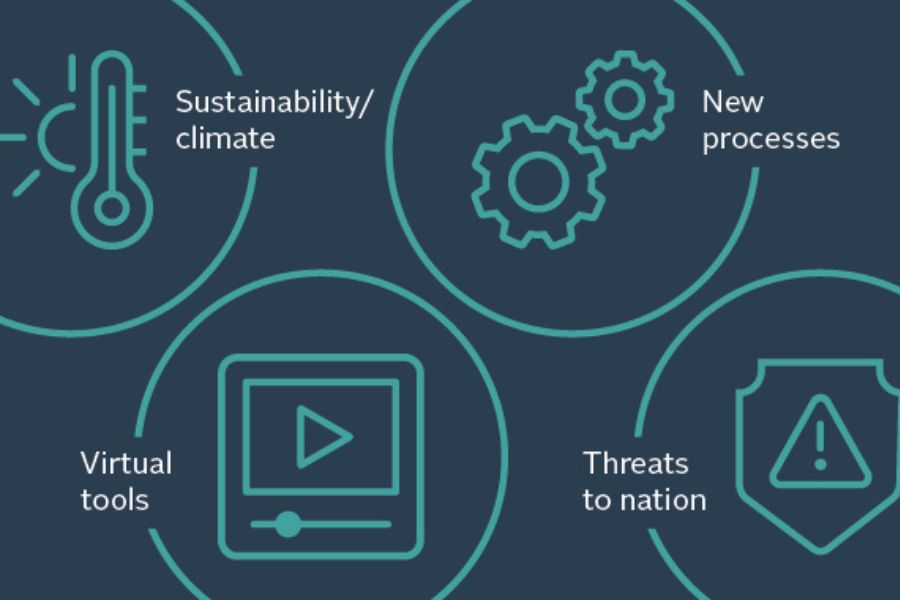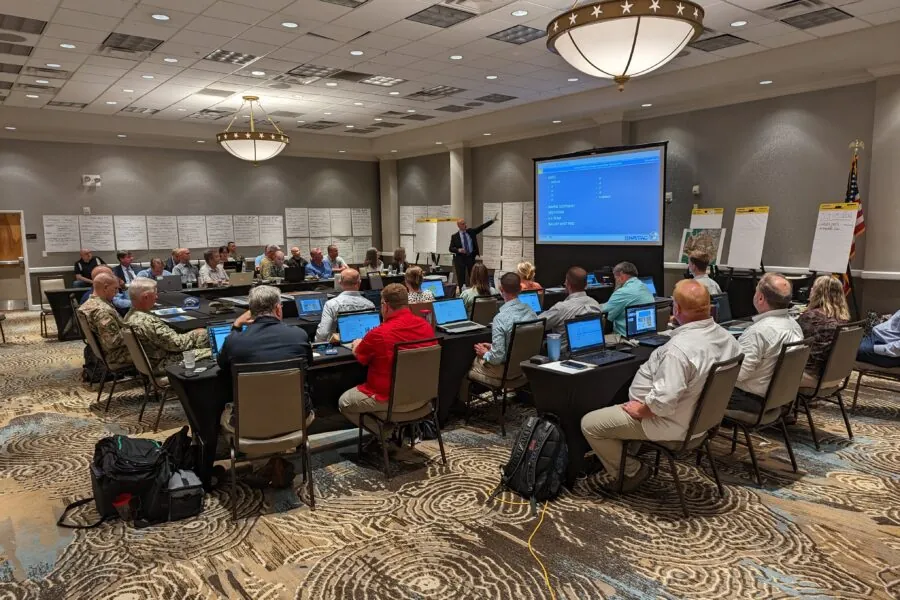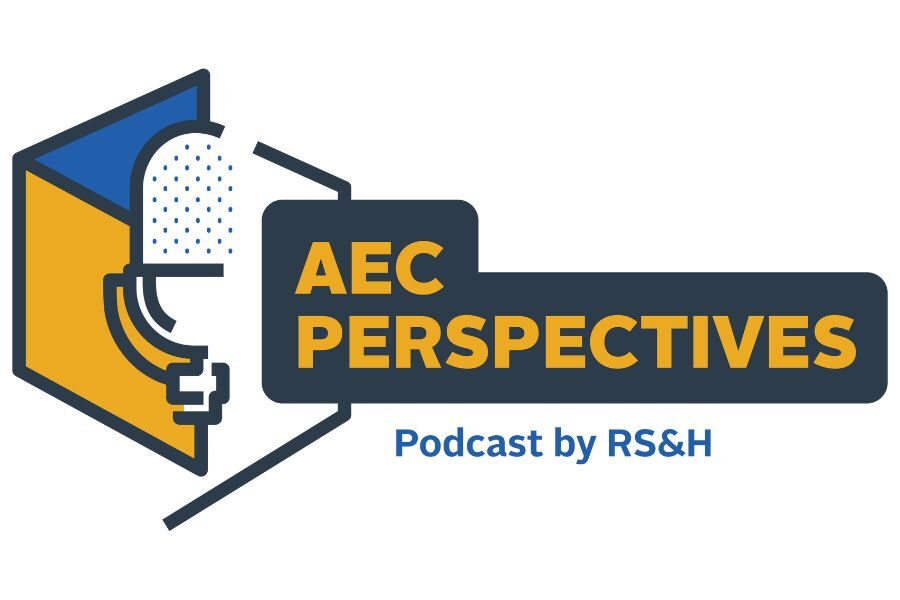Changing Times & a Changing Climate: 4 Key Takeaways From SAME Capital Week

This year’s Society of American Military Engineers’ (SAME) Virtual Capital Week offered the Architecture, Engineering & Construction (AEC) community a front-row seat to hear from senior officials about defense industry challenges and opportunities. From updates to the TORN process to threats to the nation, a wide range of topics were covered.
As I reflect on what I learned, four takeaways remain top of mind. Whether you missed a session or two or simply want a review of the week’s key points, I hope my thoughts help frame and inform your view of what’s next for the defense market.
The TORN (Task Order Requirement Notice) Process
TORN, my new favorite four-letter word. And since questions regarding the TORN process were upvoted to the top of nearly every briefing I attended, I’ll venture to say I’m not the only one.
If you haven’t received a TORN, the process has basically made multiple award task order contracts (MATOC) and indefinite delivery/indefinite quantity (IDIQ) contracts a two-step procurement, causing more work for the industry and the government alike.
During the Army Design & Construction Programs briefing, United States Army Corps of Engineers (USACE) representatives acknowledged they were not clear with the initial TORN process. As a result, they have issued a clarification to the process in coordination with the American Council of Engineering Companies (ACEC), the Pentagon and industry.
During the session, Dr. Christine Altendorf, Acting Director of Military Programs, HQ USACE, said that the government’s technical team will first review existing SF330s to decide if they need more information to determine the most qualified firm. So, it’s likely that complex or unique task orders will require a TORN response for more information and that more standard project types will not. While responding to a TORN will allow firms to provide targeted qualifications, it will now be optional.
Will this change allow USACE to remain compliant with the Brooks Act and reduce the burdensome expenditures? Will other branches, like the Air Force Civil Engineer Center (AFCEC), take a play from USACE’s updated TORN playbook with their new suite of AE NEXT 2021 contracts? That has yet to be seen – but here’s to hoping there’s a light at the end of a hectic tunnel.
A Virtual Shift to the New Normal
Back in March 2020, the industry and the government quickly adapted to new technology and ways of producing deliverables because many project schedules, like the F-22 beddown at Joint Base Langley-Eustis, didn’t have the bandwidth to wait while the nation “flattened the curve.” Now that multiple vaccines are being distributed and many companies are on a path to returning to offices, project sites and in-person meetings, which technologies and processes from 2020 will become part of the new normal?
Lt. Gen. Scott Spellmon, USA, 55th U.S. Army Chief of Engineers and Commanding General of the U.S. Army Corps of Engineers, said that while he is ready to get back to face-to-face interaction, he doesn’t expect it to be the same environment as before. He noted that, like many organizations, USACE has a working group assessing how the Corps can harness cost-savings through new processes and protocols, such as reduced office space and virtual meetings.
Throughout the week, the consensus seemed to be that our new normal won’t look like February 2021, but it also won’t return to February 2020.
Sustainability & Resiliency
The Biden administration has placed a focus on sustainability, with special envoy John Kerry calling climate change “among the most complex security issues we’ve ever faced” at the virtual Munich Security Conference back in February 2021.
Brig. Gen. William Kale III, USAF, Air Force Director of Civil Engineers, Deputy Chief of Staff for Logistics, Engineering & Force Protection, noted during his fireside chat that the confluence of climate change factors can be seen in the rebuilds of Tyndall Air Force Base and Offutt Air Force Base. He acknowledged that the key is to look at what is needed to meet imminent challenges. As the Tyndall Air Force Base rebuild has been deemed the installation of the future, he said, “we’re not going to build what we had, but what we need.”
Gen. Spellmon echoed Gen. Kale, noting that climate change is expected to be a focus area and that concerns will be felt most noticeably in projects surrounding sea level rise. During the USACE briefing, the theme of enabling installation readiness and resilience was addressed, and speakers indicated there will be a much larger emphasis and oversight of it. That strong emphasis and oversight are already showing: USACE created a climate assessment tool, which is now used by the Department of Defense (DoD) and called DoD & Army Client Assessment Tools.
While the overall updates and impacts to Unified Facility Criteria (UFCs) and other guidance are yet to be seen, they are coming.
Threats
Bad actor cyber threats are becoming more sophisticated and intense amid increasing levels of remote work and dependence on digital devices. With the government releasing updated guidance – DFARS 252.204-7012, “Safeguarding Covered Defense Information And Cyber Incident Reporting,” which requires contractors to implement NIST 800-171 – there’s a lot of talk on the topic.
During his fireside chat, Rear Adm. John Korka, CEC, USN, Commander, Naval Facilities Engineering Systems Command, and Chief of Civil Engineers, noted that climate change, resilience and cybersecurity are timely priorities.
“Creative and innovative approaches on how we achieve the objectives of resiliency in all those areas are key,” he said.
Overall, the Navy has a strong legacy culture, but to be successful, it must lean into new best practices, he added.
Gen. Kale widened the threats conversation by noting that the United States no longer has uncontested dominance and what is good enough today will not dominate tomorrow. He pointed attendees to the August 2020 publication of Accelerate Change or Lose by Gen. Charles Q. Brown, Jr., Chief of Staff of the Air Force. Adm. Korka also spoke to the Great Power Competition. He noted that the United States cannot go head-to-head with China like we did with Russia during the Cold War – different ways of thinking and diplomacy are required.
While Adm. Korka didn’t intend to summarize Capital Week with his “different ways of thinking and diplomacy are required” comment, I believe he did. Whether we’re looking at changes to the processes and technologies that we use to deliver designs and solutions or looking at how we’re keeping United States interests at home and abroad secure, limiting the use of “well, that’s how we’ve always done it” will be key.
Learn more about innovative solutions for your next defense project.




